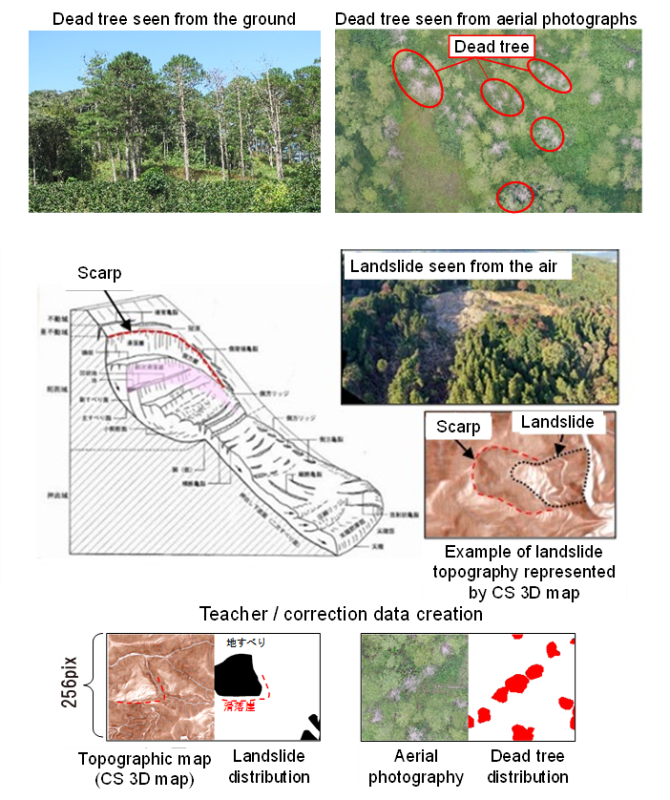

KIOSK collects and organizes basic technologies from all fields that contribute to Survey and Analysis.
Generally, the damage of roads is caused by earthquake, landslide, flooding, and debris flow, etc.
Landslides, flooding, and debris flow are caused by heavy rainfall; therefore, it is necessary to pay attention to changes in rainfall due to climate change.
Various surveys and analysis are required to evaluate the condition of the site quantitatively and objectively.
Road managers should apply suitable Survey and Analysis technologies for planning suitable measures and construction.

Figure 1.4.3 Example of survey and analytics of slope failure
Landslides, debris flows, and flooding are generally caused by heavy rainfall. Therefore, it is important for road managers to observe rainfall along the road in real time.
For this purpose, it is necessary to establish a system that conducts local meteorological and rainfall observations to inform road managers.
In addition, it is also necessary to combine with a system that alerts when the observed data exceeds a certain threshold level so that road managers can quickly make decisions such as traffic regulations.
Slope risks depend on the geography and geology. Geographical, geological and geotechnical survey, simulation and monitoring is necessary for mapping the location where the risks exist and assess the hazards.
During and after construction, periodical monitoring of the road and slope along the road is essential for the road management.
Earthquakes generally occur along active faults. In addition, it must be considered that disasters due to tsunami and liquefaction may occur in coastal areas and soft ground areas. Therefore, the assessment of the earthquake hazards should be carried out based on the knowledge of earth science. And combining with earthquake observation networks, and simulations of seismic intensity and tsunami height, we can estimate earthquakes, tsunamis, and liquefaction hazards that may occur in the future.
Natural disasters are mainly caused by earthquakes and heavy rains. But there might be a possibility that disaster factors other than earthquakes and heavy rains might cause hazards.
In this section, other disaster factors, which are not described in 1.4.3.1 – 1.4.3.3, are described.